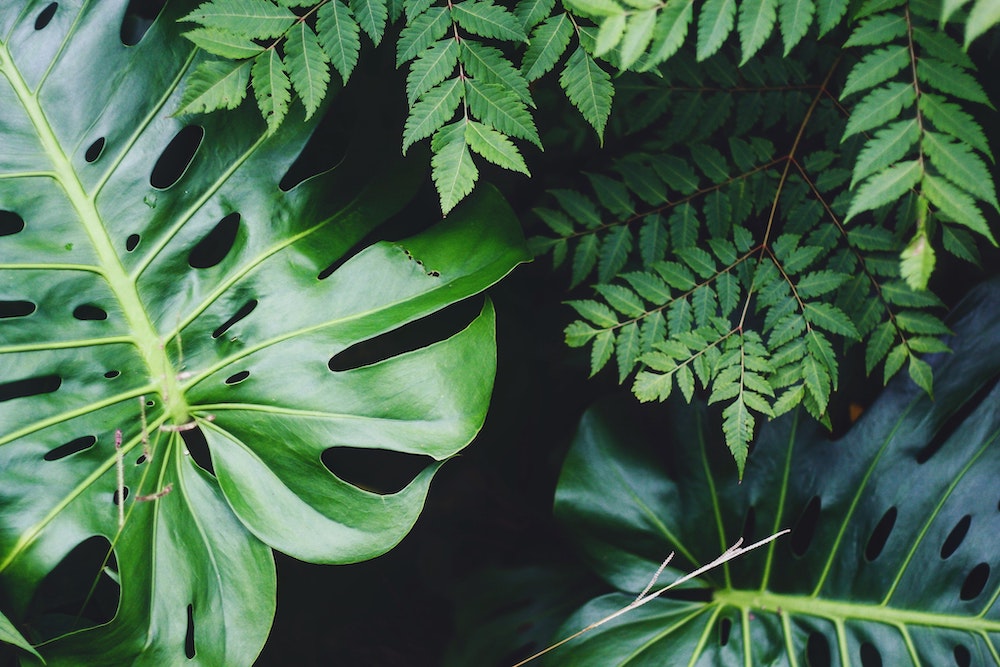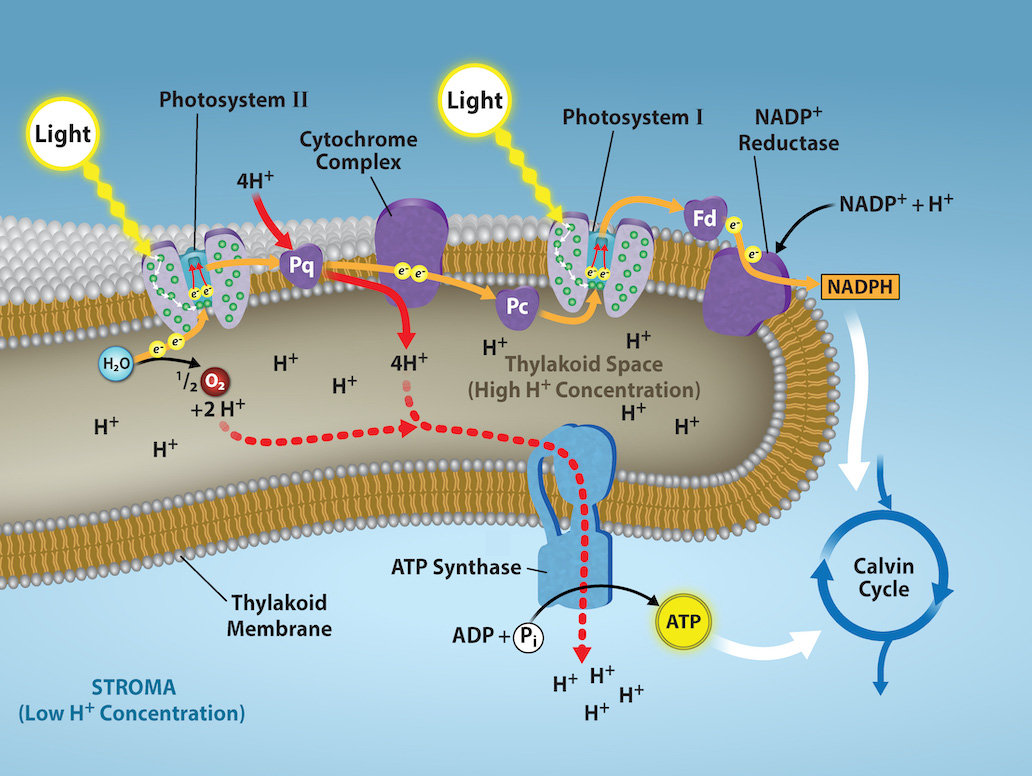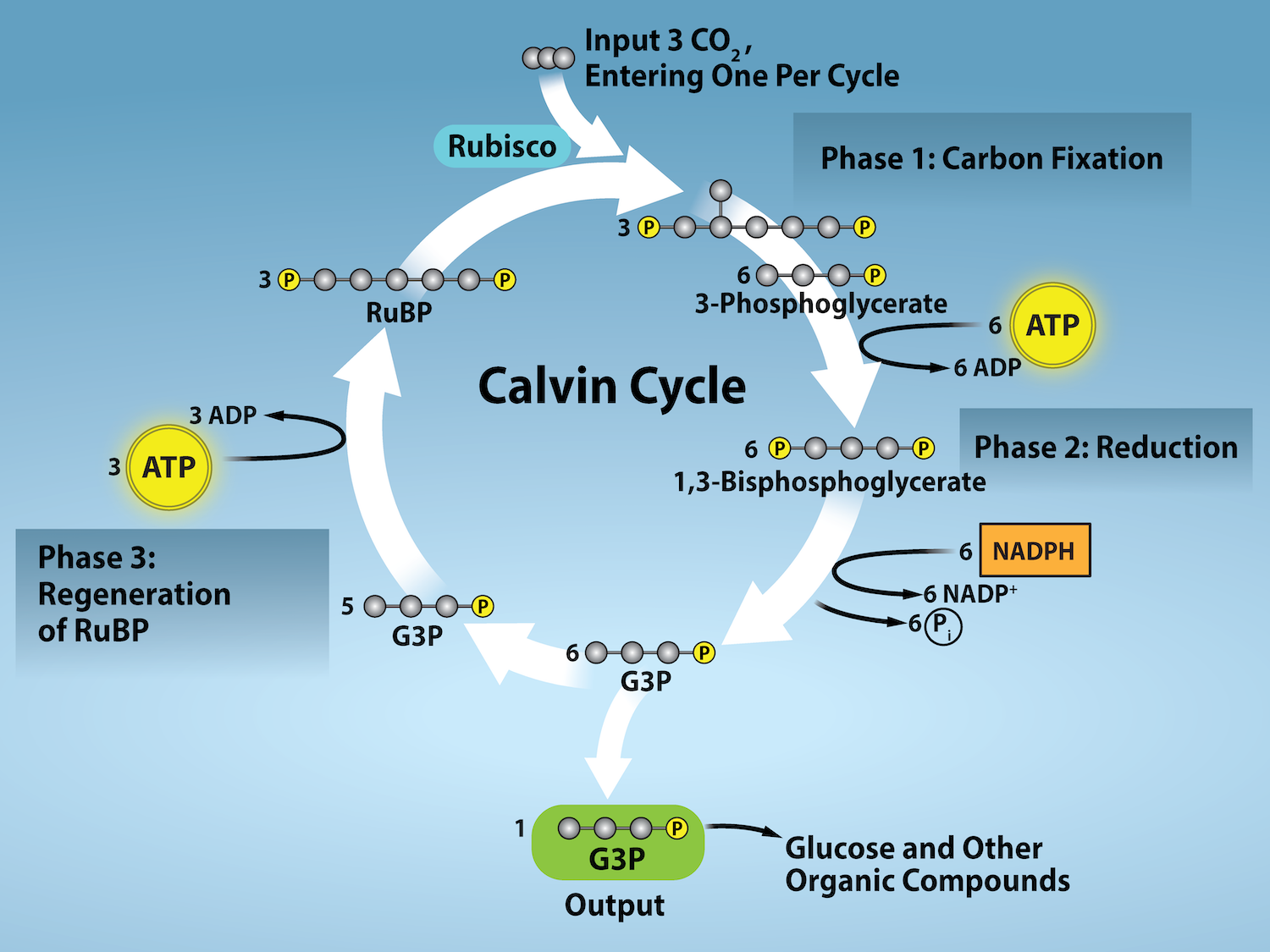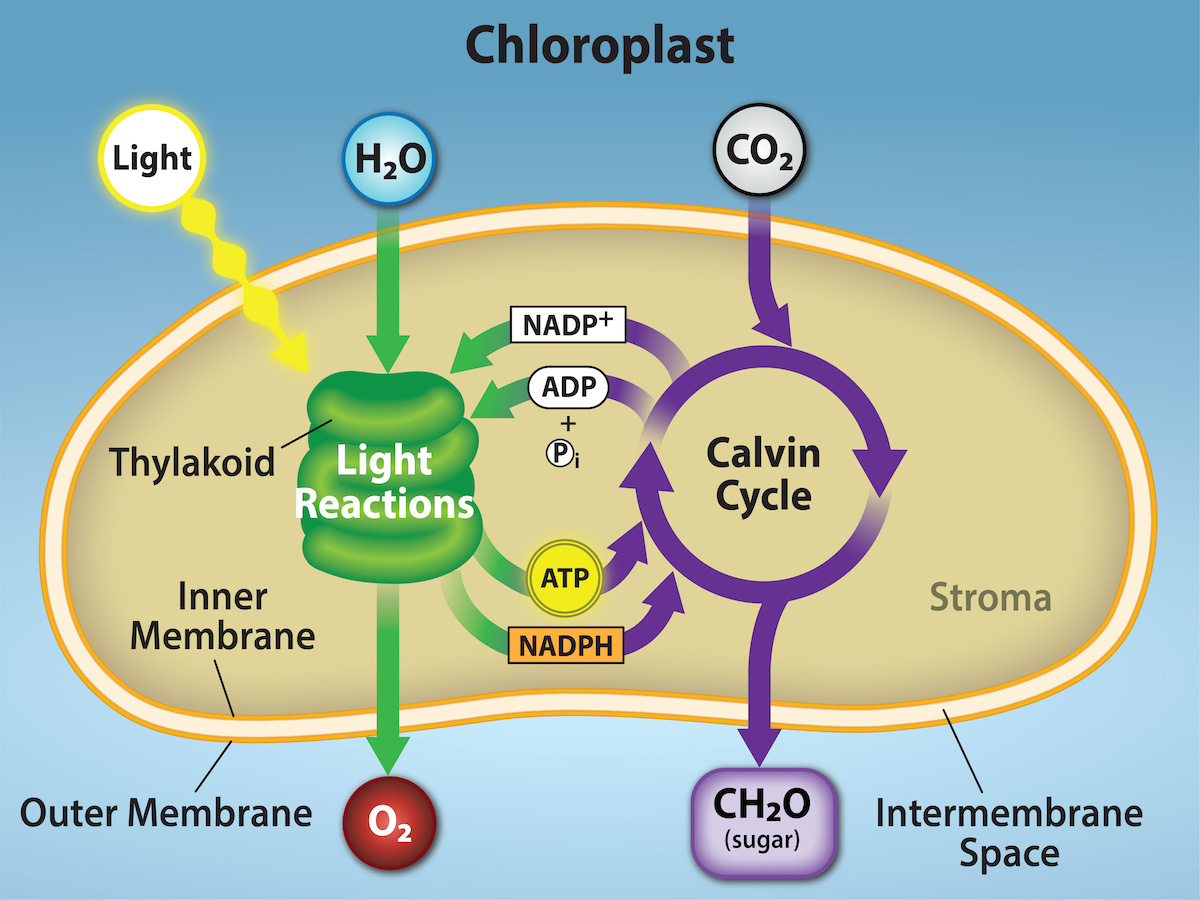Life largely owes its existence to this equation.
Be sure to hug your house plant today.

Credit: Jackie DiLorenzo / Unsplash
KEY TAKEAWAYS
Every living creature needs three things: a source of energy, a source of carbon, and a source of electrons.
Photosynthesis is the ultimate form of self-sufficiency.
It also provides energy-hungry lifeforms with the oxygen we need to survive, along with solid, carbon-containing molecules that we consume for energy and growth.
Alex Berezow
Recently, my colleague Dr. Ethan Siegel wrote an article explaining why F = ma — that is, force = mass x acceleration — is the most important equation in physics. That seemingly humble equation, known as Newton’s second law of motion, is useful to physicists at all levels and even gives hints about special relativity.
That got me thinking: Does every scientific field have an equation like this? An equation so important, that the topic or field itself couldn’t exist without it? I pondered this as a microbiologist and came to the conclusion that, yes, there is such an equation for biology: CO2 + H2O → C6H12O6 + O2. (This is the unbalanced version. The balanced version is: 6CO2 + 6H2O → C6H12O6 + 6O2.)
In simple terms: carbon dioxide + water → glucose + oxygen. This is photosynthesis, and without it, there likely would be no plants or animals.
Why photosynthesis dominated the world
For reasons that I will describe in more detail later, every living creature needs three things: a source of energy, a source of carbon, and a source of electrons. Plants (and microbes that photosynthesize) get their energy from sunlight, their carbon from CO2, and their electrons from H2O. Yet, as important as photosynthesis is, note that it is not necessary for life itself. Microorganisms have found a way to survive just about anywhere on Earth. For example, some survive in the deep ocean (where there is no light), getting their energy from sulfurous chemicals. Light is nice to have but not necessary for life to evolve.
While photosynthesis is not especially energy efficient, it is the ultimate form of self-sufficiency. The first complex cells (called eukaryotes) to evolve the ability to photosynthesize gobbled up bacteria that already had that ability, forming a mutually beneficial relationship — the smaller, photosynthesizing cell got a nice home inside of a larger cell that got “rent” in the form of food and energy. The relationship worked out wonderfully, as these ancestral amalgamations eventually evolved into the wide diversity of plants we have today. As a result, all plants photosynthesize (with the exception of some parasitic ones).
Explaining “carbon dioxide + water → glucose + oxygen”
The equation that represents photosynthesis is deceptively simple: Give a plant CO2 and water and it creates food (sugar) and oxygen. But behind the scenes is a mind-bogglingly complex series of biochemical reactions, and perhaps even a dash of quantum mechanics.
Let’s start with water. Water is the source of electrons that plants need to get the process started. When light (the source of energy) hits chlorophyll (inside of a complex structure known as a photosystem, which is itself embedded in a membrane called a thylakoid), the molecule gives up electrons — which go on to accomplish some amazing things. But chlorophyll wants its electrons back, so it steals them from a water molecule, which then disassembles into two protons (H+) and an oxygen atom. This makes the oxygen atom lonely and unhappy, so it partners up with another oxygen atom, forming O2, the molecular form of oxygen that we breathe.

Credit: Rao, A., Ryan, K., Tag, A., Fletcher, S. and Hawkins, A. Department of Biology, Texas A&M University / OpenStax
Now, back to those amazing electrons. Like a game of “hot potato,” electrons are passed from protein to protein. As they travel, they cause protons (H+) to be pumped to the other side of the membrane, creating a powerful electrochemical gradient, akin to a battery. When this “battery” discharges, it creates an energy-rich molecule called ATP. If cells had money, ATP would be that money.
But that’s not the only thing those traveling electrons do. When they are finished playing hot potato, they jump aboard a molecule called NADPH, which can be thought of as an electron shuttle. Essentially, NADPH is a molecule than can carry electrons somewhere else, usually for the purpose of building something.
Let’s pause to summarize what the plant has accomplished so far: It absorbed light and used that energy to rip electrons away from water, producing oxygen (O2) as a side product. It then used those electrons to generate “money” (ATP), after which the electrons boarded a bus (NADPH). Now, it’s time to spend that money and put those electrons to use one more time in a process called the Calvin cycle.
Now, back to those amazing electrons. Like a game of “hot potato,” electrons are passed from protein to protein. As they travel, they cause protons (H+) to be pumped to the other side of the membrane, creating a powerful electrochemical gradient, akin to a battery. When this “battery” discharges, it creates an energy-rich molecule called ATP. If cells had money, ATP would be that money.
But that’s not the only thing those traveling electrons do. When they are finished playing hot potato, they jump aboard a molecule called NADPH, which can be thought of as an electron shuttle. Essentially, NADPH is a molecule than can carry electrons somewhere else, usually for the purpose of building something.
Let’s pause to summarize what the plant has accomplished so far: It absorbed light and used that energy to rip electrons away from water, producing oxygen (O2) as a side product. It then used those electrons to generate “money” (ATP), after which the electrons boarded a bus (NADPH). Now, it’s time to spend that money and put those electrons to use one more time in a process called the Calvin cycle.

Credit: Credit: Rao, A., Ryan, K., Tag, A., Fletcher, S. and Hawkins, A. Department of Biology, Texas A&M University / OpenStax
The Calvin cycle is the point at which carbon dioxide (CO2) enters the scene. This is the process that “fixes” carbon dioxide into a solid form by combining it with a five-carbon sugar to create a six-carbon sugar. (The enzyme that carries out this reaction, called rubisco, is likely the most abundant protein on Earth.) Notice that the cell has to use the ATP and the NADPH that it generated earlier to keep the cycle going. The ultimate output of the cycle is a molecule called G3P, which the cell can use for a variety of things — from making food (like the sugar glucose) to building structural molecules so the plant can grow.
Thank you, photosynthesis!
Every part of the photosynthesis equation now has been accounted for. A plant cell uses carbon dioxide (CO2) and water (H2O) as inputs — the former so that it can convert carbon into a solid form and the latter as a source of electrons — and creates glucose (C6H12O6) and oxygen (O2) as outputs. Oxygen is sort of a waste product in this process, but not really. After all, the plant needs to “eat” the glucose it just made, and it requires oxygen to do so.
The Calvin cycle is the point at which carbon dioxide (CO2) enters the scene. This is the process that “fixes” carbon dioxide into a solid form by combining it with a five-carbon sugar to create a six-carbon sugar. (The enzyme that carries out this reaction, called rubisco, is likely the most abundant protein on Earth.) Notice that the cell has to use the ATP and the NADPH that it generated earlier to keep the cycle going. The ultimate output of the cycle is a molecule called G3P, which the cell can use for a variety of things — from making food (like the sugar glucose) to building structural molecules so the plant can grow.
Thank you, photosynthesis!
Every part of the photosynthesis equation now has been accounted for. A plant cell uses carbon dioxide (CO2) and water (H2O) as inputs — the former so that it can convert carbon into a solid form and the latter as a source of electrons — and creates glucose (C6H12O6) and oxygen (O2) as outputs. Oxygen is sort of a waste product in this process, but not really. After all, the plant needs to “eat” the glucose it just made, and it requires oxygen to do so.

Credit: Credit: Rao, A., Ryan, K., Fletcher, S., Hawkins, A. and Tag, A. Texas A&M University / OpenStax
Even though some microbes live without light or photosynthesis, most of the life on Earth is completely dependent on it. Photosynthesis provides energy-hungry life forms with the oxygen we need to survive, along with solid, carbon-containing molecules that we consume for energy and growth. Without photosynthesis, we would not be here. As a corollary, planets that don’t get enough sunlight to support photosynthesis almost certainly don’t host complex life forms.
Life and the field of biology largely owe their existence to photosynthesis. Hug your house plant today.
Even though some microbes live without light or photosynthesis, most of the life on Earth is completely dependent on it. Photosynthesis provides energy-hungry life forms with the oxygen we need to survive, along with solid, carbon-containing molecules that we consume for energy and growth. Without photosynthesis, we would not be here. As a corollary, planets that don’t get enough sunlight to support photosynthesis almost certainly don’t host complex life forms.
Life and the field of biology largely owe their existence to photosynthesis. Hug your house plant today.
No comments:
Post a Comment